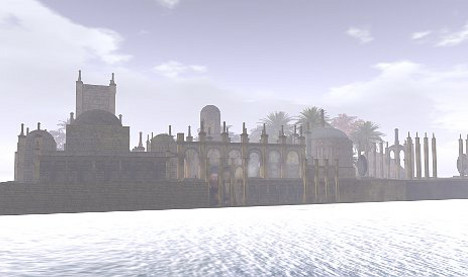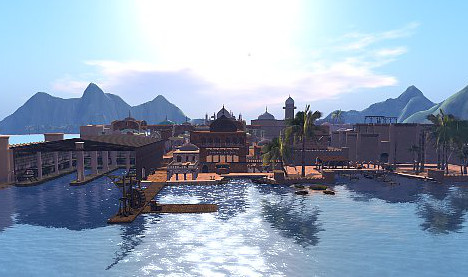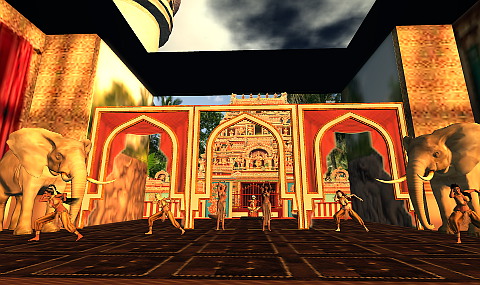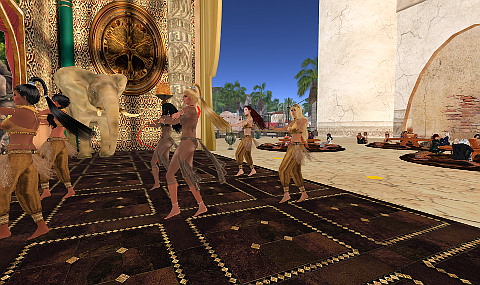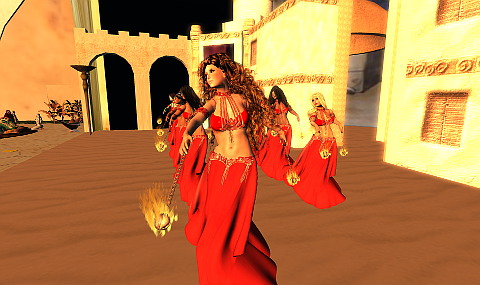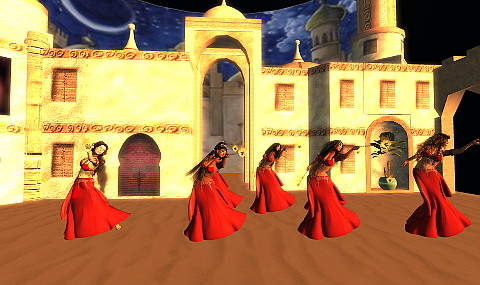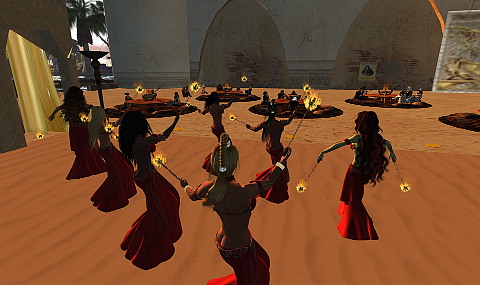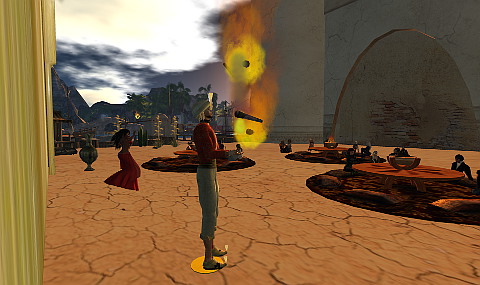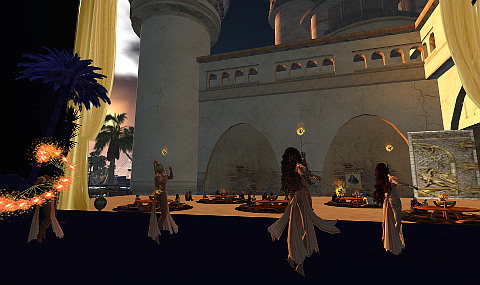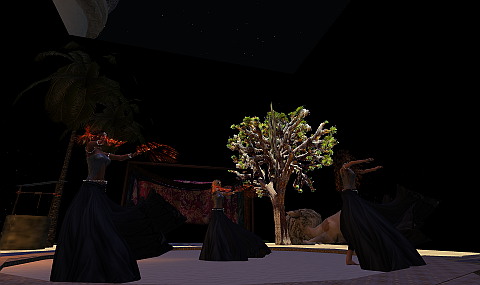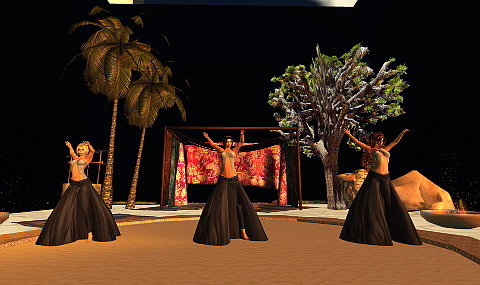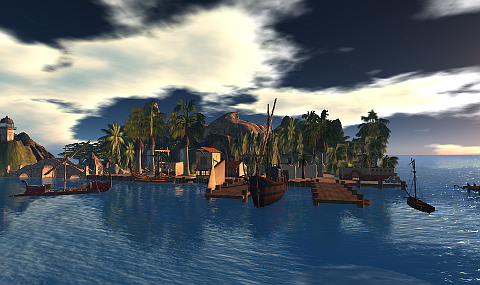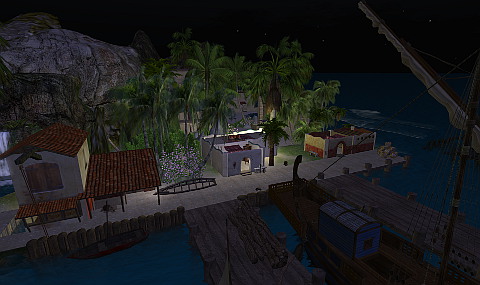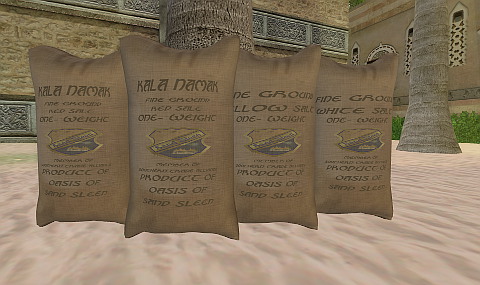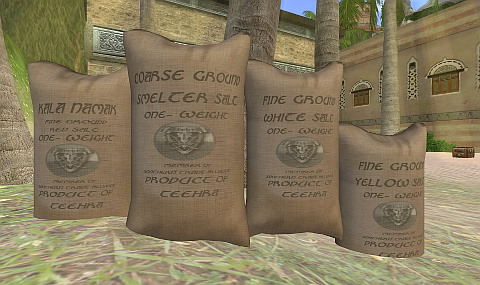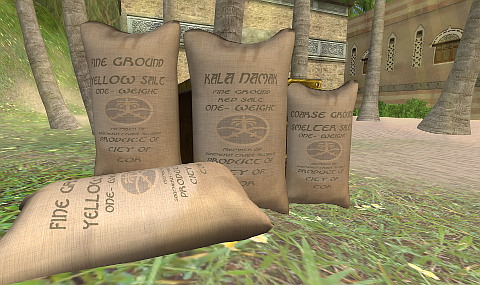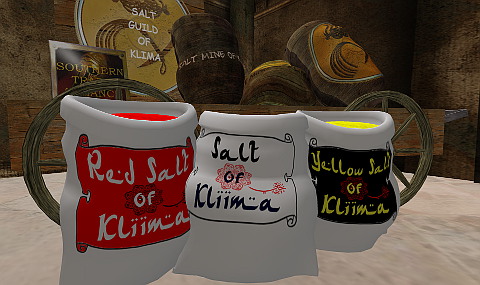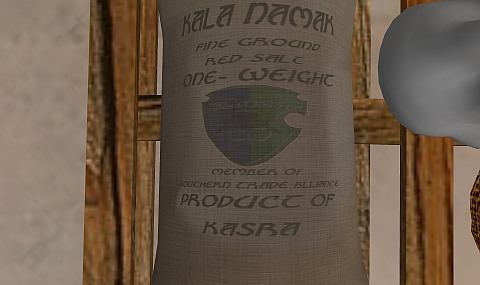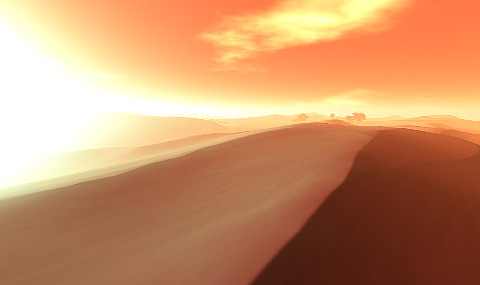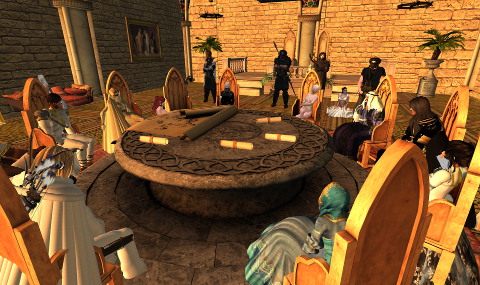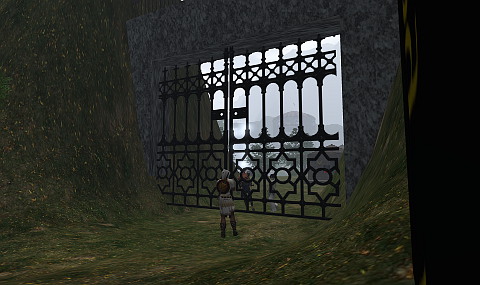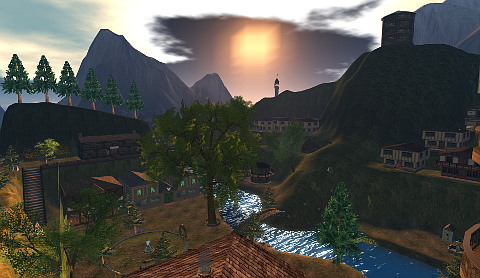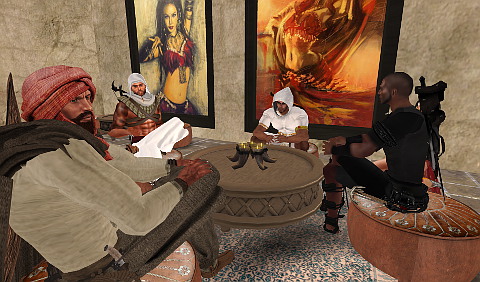Archive for September, 2016
Oasis Dancers in Ianda, again
Saturday, September 24th, 2016Ianda Harbour – New Suburb of Ianda
Saturday, September 24th, 2016Ianda on the isle of Landa got twe new suburbs: Ianda harbor (pictures above, including the tavern “the Thirsty Warrior”) and Port Ianda.
True Salt of the Tahari Desert
Saturday, September 24th, 2016Whereas salt may be obtained from sea water and by burning seaweed, as is sometimes done in Torvaldsland, and there are various districts on Gor where salt, solid or in solution, may be obtained, by far the most extensive and richest of known Gor’s salt deposits are to be found concentrated in the Tahari. Tahari salt accounts, in its varieties, I would suspect, for some twenty percent of the salt and salt-related products, such as medicines and antiseptics, preservatives, cleansers, bleaches, bottle glass, which contains soda ash, taken from salt, and tanning chemicals, used on known Gor. Salt is a trading commodity par excellence. There are areas on Gor where salt serves as a currency, being weighed and exchanged much as precious metals. The major protection and control of the Tahari salt, of course, lies in its remoteness, the salt districts, of which there are several, being scattered and isolated in the midst of the dune country, in the long caravan journeys required, and the difficulty or impossibility of obtaining it without knowing the trails, the ways of the desert. »
« Tribesmen of Gor » page 208
« At Klima, and other such areas, salt is an industry. Thousands serve there, held captive by the desert. Klima has its own water, but it is dependent on caravans for its foods. These food stores are delivered to scouted areas some pasangs from the compounds, whence they are retrieved later by salt slaves. Similarly, the heavy cylinders of salt, mined and molded at Klima, are carried on the backs of salt slaves from storage areas at Klima to storage areas in the desert, whence they are tallied, sold and distributed to caravans. The cylinders are standardized at ten stone, or a Gorean ‘Weight,’ which is some forty pounds. A normal kaiila carries ten such cylinders, five to a side. A stronger animal carries sixteen, eight to a side. The load is balanced, always. It is difficult for an animal, or man, of course, to carry an unbalanced load. »
« Tribesmen of Gor » page 238
» (…) much of the salt at Klima comes from its famous brine pits. These pits are of two kinds, « open » and « closed. » Men, in the closed pits, actually descend and, wading, or on rafts, negotiate the sludge itself, filling their vessels and later, eventually, pouring their contents into the lift sacks, on hooks, worked by windlasses from the surface. The « harvesting » vessel, not the retaining vessel, used is rather like a perforated cone with a handle, to which is attached a rope. It is dragged through the sludge and lifted, the free water running from the vessel, leaving within the sludge of salt, thence to be poured into the retaining vessels, huge, wooden tubs. The retaining vessels are then emptied later into the lift sacks, a ring on which fits over the rope hooks. In places, the « open pits, » the brine pits are exposed on the surface, where they are fed by springs from the underground rivers, which prevents their desiccation by evaporation, which would otherwise occur almost immediately in the Tahari temperatures. Men do not last long in the open pits. »
« Tribesmen of Gor » page 239
« Besides the mines and pits of the salt districts, there are warehouses and offices, in which complicated records are kept, and from which shipments to the isolated, desert storage areas are arranged. There are also processing areas where the salt is freed of water and refined to various degrees of quality, through a complicated system of racks and pans, generally exposed to the sun. Slaves work at these, raking, stirring, and sifting. There are also the molding sheds where the salt is pressed into the large cylinders, such that they may be roped together and eventually be laden on pack kaiila. The salt is divided into nine qualities. Each cylinder is marked with its quality, the name of its district, and the sign of that district’s salt master.
Needless to say, Klima contains as well, incidental to the salt industry centered there, the ancillary supports of these mining and manufacturing endeavors, such as its kitchens and commissaries, its kennels and eating sheds, its discipline pits, its assembly areas, its smithies and shops, its quarters for guards and scribes, an infirmary for them, and so on. In many respects Klima resembles a community, save that it differs in at least two significant respects. It contains neither children, nor women. »
Oasis of Klima is back!
Saturday, September 24th, 2016A caravan of merchants of the Southern Trade Alliance has made the way to the Oasis of Klima again. The path was lost for a long time.
In the distance, below, perhaps five pasangs away, in the hot, concave, white salt bleakness, like a vast, white, shallow bowl, pasangs wide, there were compounds, low, white buildings of mud brick, plastered. There were many of them. They were hard to see in the distance, in the light, but I could make them out.
«Klima, »said Hamid.
Most salt at Klima is white, but certain of the mines deliver red salt, red from ferrous oxide in its composition, which is called the Red Salt of Kasra, after its port of embarkation, at the juncture of the Upper and Lower Fayeen.
“For twenty days had we marched. Some thought it a hundred. Many had lost count. More than two hundred and fifty men had been originally in the salt chain. I did not know how many now trekked with the march. The chain was now much heavier than it had been, for it, even with several sections removed, was carried by far fewer men. To be a salt slave, it is said, one must be strong. Only the strong, it is said, reach Klima.”
Second Salt Decree Declared!
Tuesday, September 6th, 2016DECLARATION OF THE TRUE SOUTHERN TRADE ALLIANCE
Declared and confirmed by the high assembly of STA members
Second day of the fourth hand of the sixth month of the year 10167 Contasta Ar
To: All Gorean Merchants
Concerning: Tahari Salt decree by the SOUTHERN TRADE ALLIANCE
I.
In order to guarantee the fine quality of Tahari Salt only the following oases and cities of the Tahari are allowed to have their salt trademarked as Tahari Salt :
1. City of Tor
2. Oasis of Sand Sleen
3. Teehra
4. Oasis of Two Scimitars (Oases der Zwei Scimitare, German )
II.
All merchants who want to trade with red or yellow salt of the Tahari need to visit the City of Tor or the Oasis of Sand Sleen or Teehra to get it. Red and Yellow salt without a valid receipt from Tor or Sand Sleen or Teehra will be treated as smugglers. The STA declares the trade with red and yellow salt illegal except from certified merchants from Tor or Sand Sleen or Teehra or the Oase der zwei Scimitare.
III.
The true SOUTHERN TRADE ALLIANCE will control the salt trade of all Tahari Salt. Only members of the SOUTHERN TRADE ALLIANCE (STA) are allowed to sell the salt of the above mentioned four places out of the Tahari and each sale should include the SOUTHERN TRADE ALLIANCE seal. Merchants of all gorean cities are hereby informed that Tahari Salt without the seal is considered as smuggling, with all due consequences as a result.
Only salt bags of red and yellow salt which have a valid certifications from Teehra (or former Kasra/Fayeen), Sand Sleen or Tor are valid.
IV.
The true yellow and red salt delivered by STA merchants is only for your own consumption. You are NOT allow to resell it.
This decree will be effective as today.
May you always have water, may your water bags never be empty!
signed by the SOUTHERN TRADE ALLIANCE
Sealed by:
Doc Grun, Vizier of the Taharian city of Tor, former High Pasha of the Oasis of Nine Wells
Jabari Adheem Ibn Yusuf (hideogarvan) , Pasha of Teehra
Imani bint Saran (zayla.whitesong), representing ibn Saran, salt Ubar of the Kasbah
Angel Firethorn, High Pasha of the Oasis of Sand Sleen
Ulric Merlin, Head merchant Oase der Zwei Scimitare
Witnessed: Rarius Yuroki (Rarius Yuroki), STA ambassador, head merchant of Ianda
The Soaring Herlit
Thursday, September 1st, 2016Back from the Sardar!
Thursday, September 1st, 2016Picture: Ianda head merchant Rarius Yuroki and Ianda deputy administrator Marcus Attilius Flamma talking to the authorities of Teehra.
Many free persons on Gor seldom travel more than a few pasangs from their village or the walls of their city. An important exception to this is the pilgrimage to the Sardar, which every Gorean, male and female, is expected to undertake at least once in his life. The journey, of course, from many points on Gor to the Sardar is, at least in certain parts, dangerous.
Sherman Easterwood traveled to Sardar for months. He returned back safe and sound and resumed his position as Administrator of Ianda.
Marcus Attilius Flamma stepped back and will be deputy administrator of Ianda on the Isle of Landa.
